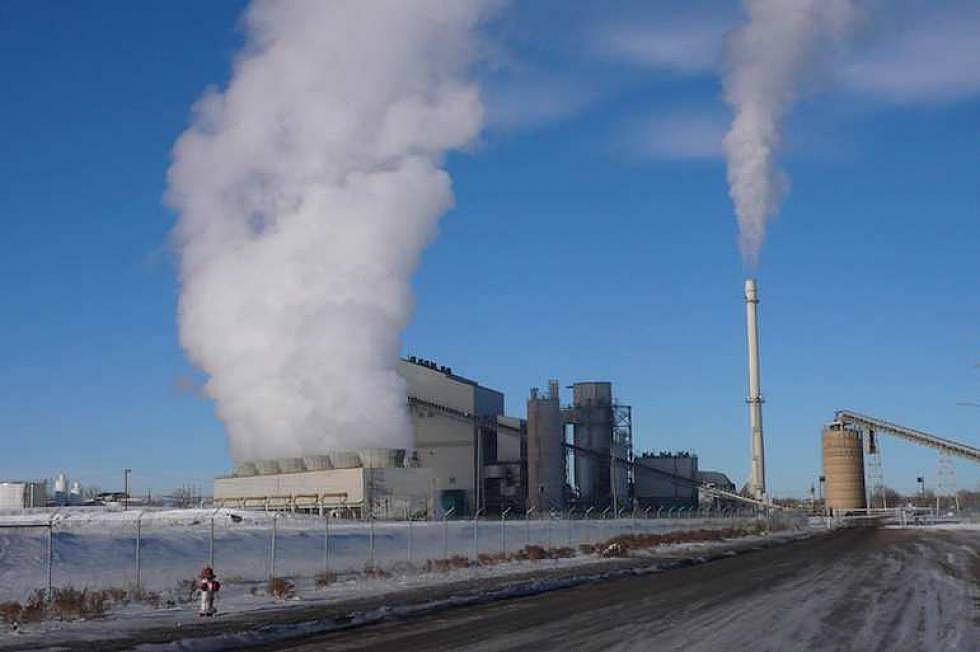
Hardin power plant may close in early 2018; market price of electricity too low
A Hardin coal-fired power plant with 30 employees and an annual payroll of $3 million could be shut down as early as the first quarter of 2018, according to the company that owns it.
In an Oct. 5 letter to the Montana Public Service Commission, Gary Arneson, vice president of operations for Rocky Mountain Power, said the company “has decided to exit the Hardin Generating Station.”
The 120-megawatt plant was built in 2006, and while its cost of production “is among the lowest for thermal generators in the region,” Arneson said in the letter, “the decline in the market price of electricity has caused Hardin to lose money since 2014. … Unfortunately, these losses are no longer sustainable.”
In addition to the direct impact on company employees, Arneson said, a closure would also endanger jobs at the Crow Tribe-owned Absaloka Coal Mine, which supplies coal to the Hardin plant.
The only other option besides closure is selling the plant, Arneson said, adding that Rocky Mountain Power has “initiated preliminary discussions with potential interested parties. We believe Hardin would be a valuable asset for an electric distribution company or an industrial concern or consortium with a substantial electric load.”
Arneson could not be reached for comment, but Anne Hedges, deputy director of the Montana Environmental Information Center, said it appears Rocky Mountain is making a pitch to be purchased by NorthWestern Energy, which is the transmission service provider for the Hardin plant.
On Wednesday, the Taylor Luther Group, a Helena law firm that represents Rocky Mountain Power, wrote to the PSC asking that Arneson’s Oct. 5 letter be included as public comment for consideration under NorthWestern’s Energy Supply Procurement Plan, which is currently under review by the PSC.
Hedges said Rocky Mountain Power is “just not viable, so they need someone to take over who has a guaranteed customer base.” If that’s what Rocky Mountain Power is up to, Hedges said, it’s a desperate, probably doomed maneuver.
“I can’t imagine that NorthWestern would want to take a plant like this into their portfolio,” she said. “They’d be crazy to do that.”
No one on the Public Service Commission could be reached Friday. Mark Taylor and Pam Bucy, lawyers with the Taylor Luther Group referenced in the cover letter to the PSC, also were unavailable to comment.
In his letter to the PSC, Arneson said the Hardin Generating Station “represents an important energy resource in Montana — its delivered fuel cost is substantially lower than natural gas during any month and it can provide reliable, baseload power to Montana homes and businesses well below current retail rates.”
However, the letter continues, “if we are unable to identify a buyer for the facility, plant closure would be likely, perhaps as soon as the first or second quarter of 2018. We would of course notify State, Crow Nation, County and Town officials well in advance of a potential plant closure and would work with all parties to ensure an orderly transition to mitigate the economic and employment effects of shuttering such an important asset to the local and state economy.”
The letter said the plant employs 30 people with an average salary of $64,000, adding that a shutdown would also eliminate $440,000 in annual property tax payments to local governments and would end royalties paid to the Crow Nation from the 550,000 tons of coal mined each year.
The plant has been struggling for years. The Billings Gazette reported in July that Colorado Energy, Rocky Mountain’s parent company, owed Big Horn County more than $2.1 million in delinquent taxes for 2014 and 2016. In September 2016, the Gazette reported, Colorado Energy did pay the county $798,679 to cover its 2015 taxes.
And as for the $3 million payroll, that assumes nearly full production. Based on information Rocky Mountain Power provided to the state Department of Environmental Quality, Hedges said, the plant operated only 147 days in 2016 and 179 days in 2015. As of this September, she said, the plant has operated only 12 days in 2017.
The plant is located on 200 acres of land owned by Rocky Mountain Power.
